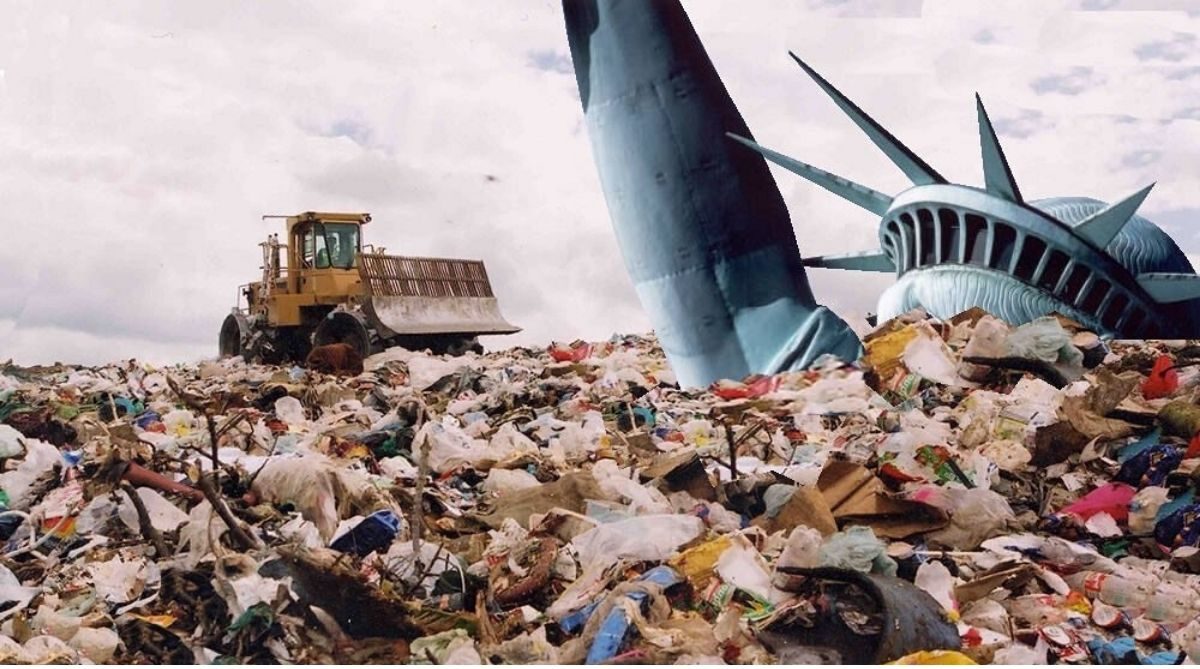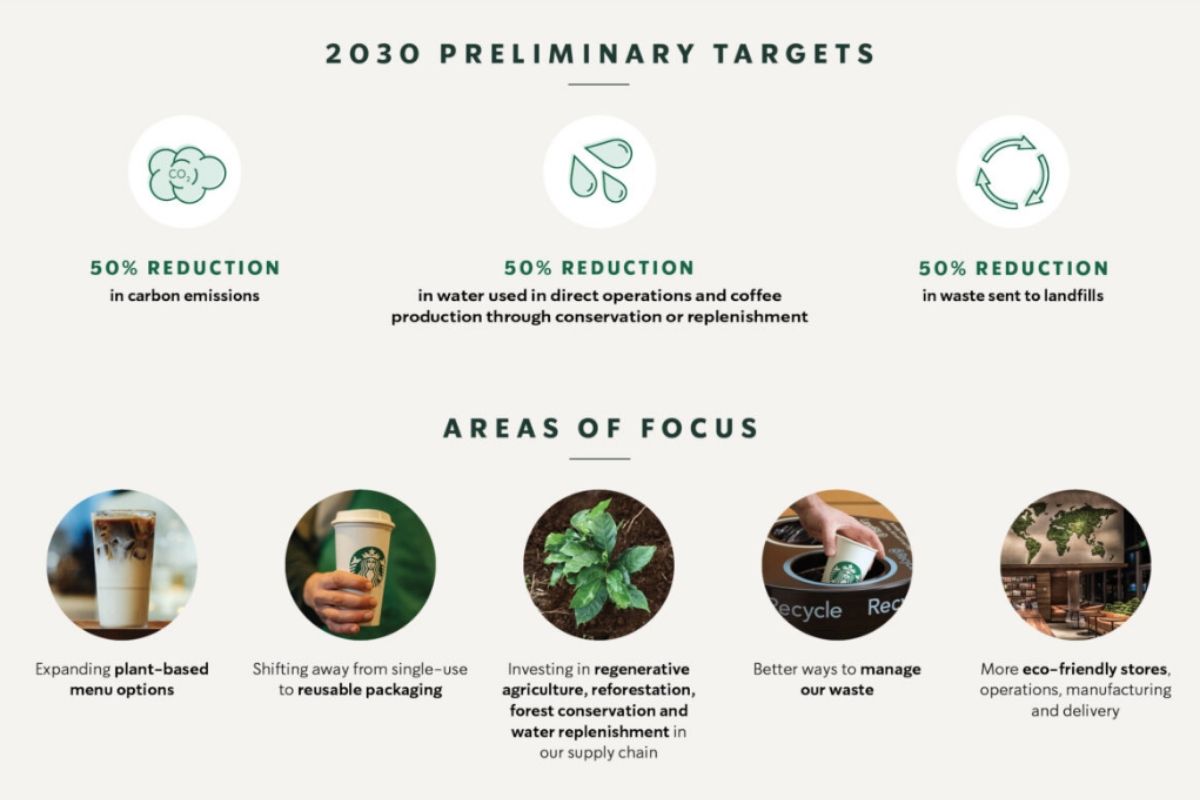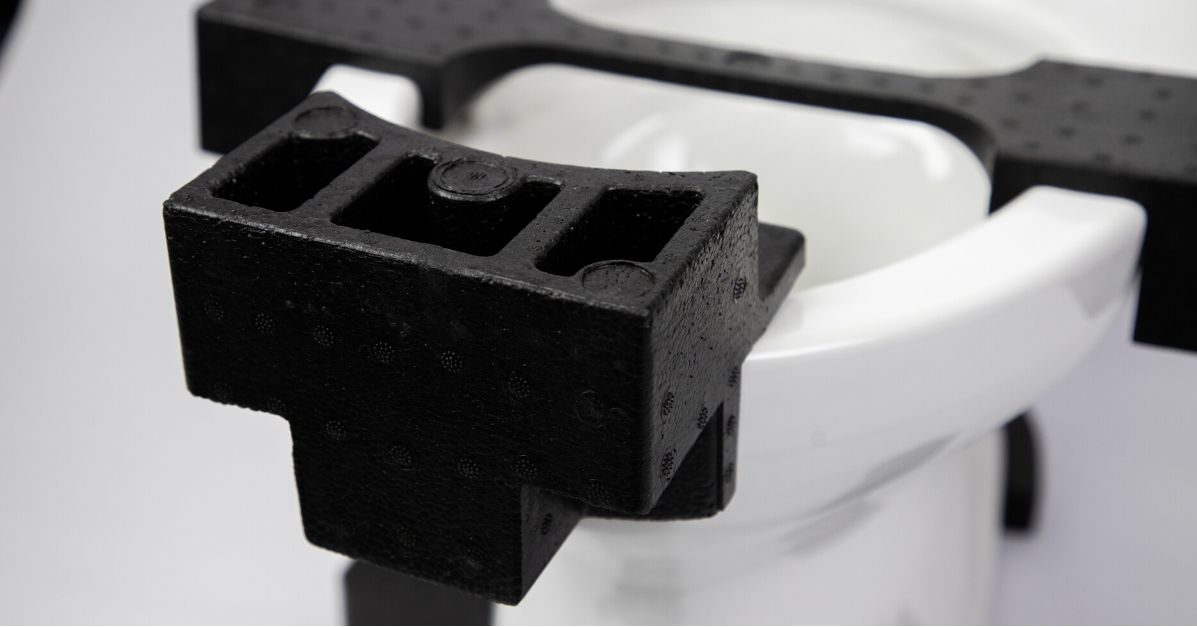Starbucks seeks to abandon single-use packaging
CEO Kevin Johnson unveils aspirations of a sustainable Starbucks by 2030
Starbucks seeks to abandon single-use packaging – Starbucks reflects a forward-thinking utopia, with expensive coffee, a modern ambiance, and free Wi-Fi. Up until now, however, the global coffee chain has failed to curb its massive impact on the environment. A recent report of their 2018 ecological footprint has prompted CEO Kevin Johnson to come forward, expressing heartfelt goals of reversing the company’s global impact.
How much packaging pollution does Starbucks release?
Starbucks has a profound environmental footprint from a combination of packaging waste, water pollution, and greenhouse gas emissions. In 2018, the company produced 956,800 tons of waste in the form of single-use cups – the lowest form of packaging. Only 18 percent of Starbucks packaging was recycled and 64 percent wound up in landfills. The rest of its packaging, 18 percent, leaks out as litter or marine waste.

For perspective, 956,800 tons of packaging waste is more than double the total weight of the entire Statue of Liberty monument. Eliminating this overwhelming amount of plastic waste seems insurmountable – after all, Starbucks’ entire business model is built off of single-use packaging cups. But this is exactly what Starbucks hopes to do.
What are Starbucks sustainability goals?
Kevin Johnson, CEO of Starbucks, announced recently a profound and long-term initiative for Starbucks eliminating single-use packaging, cutting back carbon emissions significantly, and lowering its usage of water resources. The public letter represented a “multi-decade aspiration to be a resource-positive company, giving more than it takes from the planet.”
By 2030, Starbucks hopes to achieve a 50% reduction in all pollution, carbon emissions, water usage, and plastic waste. And they just might do it – Johnson and Starbucks have a solid track record of successful sustainable campaigns. Starbucks put forward straw-less lids in 2018 and is gradually getting rid of all plastic straws.
Kevin Johnson himself sold $1 billion in bonds in efforts to bankroll sustainable sourcing processes. Further, for the last 20 years, the coffee chain has operated in partnership with Conservation International and C.A.F.E. (Coffee and Farmer Equity), operating under standards of sustainability that have reduced the company’s projected carbon footprint by half.
What does resource positive mean?
Resource-positive indicates a sustainable relationship with the Earth. “Our aspiration is to become resource positive,” writes Johnson, storing more carbon than we emit, eliminating waste, and providing more clean freshwater than we use.” This reflects a remarkable step towards a more sustainable future, as Starbucks represents a brand with powerful influence over consumer behavior and corporate culture.

Starbucks seeks to abandon single-use packaging, but how are they going to do it?
While Johnson’s remarks this past January reads more like a hopeful dream than a concrete goal – he included several integral strategies for accomplishing the endeavor. One key approach of the plan involves a “shift from single-use to reusable packaging.” They have already experimented with reusable cup programs in localized areas, for example at Gatwick Airport in London.
And though the letter doesn’t elaborate on new reusable cup designs, it is clear that in the next decade Starbucks will be replacing all single-use plastic cups with a reusable solution. Additionally, as part of its sustainable initiative Starbucks signed the Ellen MacArthur Foundation’s New Plastic Economy Global Commitment.
The NPE pledge involves a three-part process of eliminating unnecessary plastic, innovating to design reusable, recyclable, or compostable, and establishing circular closed-loop systems. This marks a step in the right direction towards a greener future led by sustainable innovation.
Innovating a sustainable future for packaging
Starbucks joins a growing number of industry leaders making changes to curb their packaging pollution via future-proof designs and new materials. We at EPE create innovative and sustainable packaging solutions, solving the challenge of product packaging with optimized, eco-friendly designs.

EPE re-engineers packaging to improve product protection and replace non-recyclable materials with reusable and 100% curbside recyclable solutions. We not only support Starbucks’ sustainable direction – we help companies across all industries make the switch to environmentally sound packaging solutions. We eliminate single-use polystyrene packaging and implement designs that significantly reduce packaging waste and carbon emissions.
Similar to Starbucks, EPE embraces innovation to achieve future-proof, sustainable packaging solutions. Talk to one of our packaging experts today about how we can improve your current packaging.